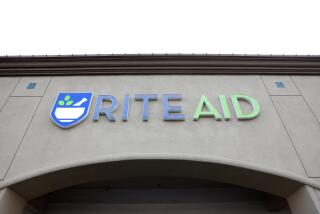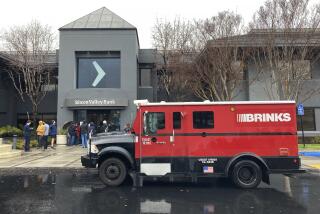S & L Bailout Cost Rises to $3.4 Billion : Banking: Taxpayers will shell out $800 million more to clean up Lincoln Savings.
- Share via
Taxpayers will pay $800 million more to clean up Lincoln Savings & Loan, already the nation’s costliest S&L; failure, as continuing expenses and lower purchase prices for its holdings have pushed the cost of liquidating the defunct Irvine thrift to $3.4 billion.
The Resolution Trust Corp., which is disposing of Lincoln, said it has revised its estimate from its original forecast of $2.6 billion, which was made when the agency closed the failed S&L; and sold its deposits to Great Western Bank in Beverly Hills in March, 1991.
The new figure means that regulators now expect to collect only 27 cents on the dollar for Lincoln’s assets, which former operator Charles H. Keating Jr. had valued at $5.4 billion before the institution was seized in April, 1989.
The revised figure is part of internal reports at the RTC, the federal agency that is liquidating the nation’s failed S&Ls;, and was released at the request of The Times.
“Wow, that seems a bit higher than I would have expected,” said Bert Ely, a thrift industry consultant in Alexandria, Va.
“It shows how good Charlie Keating was at doing a bad job,” Ely said. “Keating was a bright guy but had no sense of money, no sense of value. He was just totally out of touch with reality as far as real estate was concerned.”
Keating also defrauded thousands of investors and others. He is serving prison terms for a state securities fraud conviction and a federal racketeering, conspiracy and fraud conviction. The RTC has estimated that the wrongdoing of Keating and others accounts for $962 million of Lincoln’s total loss.
The revised figure, based on a financial review of Lincoln’s liquidation through 1992, was caused by write-downs in the value of remaining land and other assets, lower-than-expected sale prices and additional liquidation costs, said Felisa Neuringer, an RTC spokeswoman.
The agency so far has received 42 cents on the dollar for Lincoln’s real estate holdings, most of it vacant desert land bought for development, and about 48 cents on the dollar for the S&L;’s portfolio of risky high-yield corporate bonds, known as junk bonds.
After Lincoln was seized, the Federal Deposit Insurance Corp. operated the thrift for four months, turning it over to the newly formed RTC in August, 1989.
In those four months, the FDIC sold more than $250 million in assets to cover a run on deposits by customers. It also wrote down holdings by about $1 billion.
The RTC inherited assets that were appraised at $4.2 billion and has since sold about three-quarters of that at a loss of nearly $400 million.
Meanwhile, the agency--as with all failed thrifts it liquidates--has borrowed unspecified sums to pay for the costs of liquidation, thus incurring additional interest and principal expenses.
As part of its annual report, the RTC revises its loss estimates on every failed thrift that still has assets to sell. Those individual figures aren’t published but are available on request. Some estimates have lowered, Neuringer said, but Lincoln’s has shot up.
More to Read
Inside the business of entertainment
The Wide Shot brings you news, analysis and insights on everything from streaming wars to production — and what it all means for the future.
You may occasionally receive promotional content from the Los Angeles Times.










